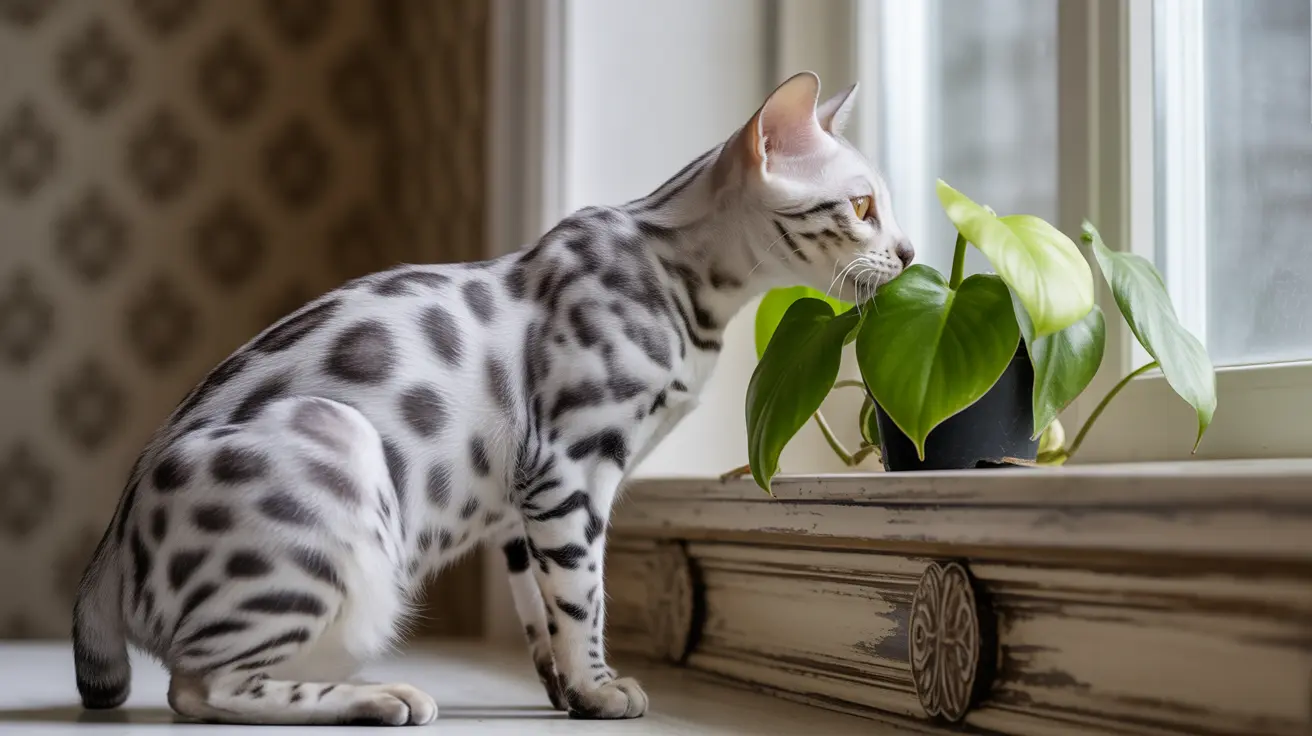Understanding Philodendron Toxicity in Cats
Philodendrons contain insoluble calcium oxalate crystals throughout all parts of the plant - including leaves, stems, and roots. These microscopic, needle-like crystals act as a natural defense mechanism for the plant but can cause severe irritation and injury when a cat bites or chews any portion of the philodendron.
When these crystals come into contact with your cat's sensitive tissues, they immediately embed themselves, triggering an intense inflammatory response. This makes philodendrons particularly dangerous for curious cats who might be tempted to nibble on houseplants.
Recognizing Signs of Philodendron Poisoning
If your cat has encountered a philodendron, watch for these common symptoms:
- Immediate oral pain and burning sensation
- Excessive drooling or foaming at the mouth
- Pawing at the face or mouth
- Difficulty swallowing
- Vomiting or retching
- Decreased appetite
- Swelling of the tongue and throat
- Vocal changes or hoarseness
In severe cases, symptoms may progress to include:
- Respiratory distress
- Significant swelling of airways
- Intense gastrointestinal upset
- Lethargy or weakness
Emergency Response and Treatment
If you suspect your cat has ingested philodendron, immediate action is crucial:
- Remove any plant material from your cat's mouth
- Gently rinse their mouth with water if possible
- Contact your veterinarian or emergency animal poison control
- Monitor breathing and watch for severe symptoms
- Never induce vomiting without veterinary guidance
Prevention Strategies for Cat Owners
The best approach to philodendron toxicity is prevention:
- Keep philodendrons completely out of reach using hanging baskets or high shelves
- Create physical barriers around plants
- Provide cat-safe alternatives like cat grass or catnip
- Consider replacing philodendrons with non-toxic plants
- Use pet deterrent sprays around plant areas
Safe Plant Alternatives
Several beautiful houseplants are safe for homes with cats:
- Spider plants
- Boston ferns
- African violets
- Areca palms
- Bamboo palms
- Swedish ivy
Frequently Asked Questions
Are philodendrons toxic to cats, and which parts of the plant are harmful?
Yes, all parts of philodendrons are toxic to cats due to calcium oxalate crystals present throughout the plant, including leaves, stems, and roots.
What symptoms should I watch for if my cat chews on a philodendron?
Watch for immediate oral irritation, excessive drooling, pawing at the mouth, difficulty swallowing, vomiting, and decreased appetite. Severe cases may show respiratory distress.
What immediate first aid steps should I take if my cat ingests philodendron leaves or stems?
Remove any plant material from your cat's mouth, rinse with water if possible, and contact your veterinarian immediately. Don't induce vomiting unless directed by a professional.
How serious is philodendron poisoning in cats, and when should I seek emergency veterinary care?
While most cases are mild to moderate, seek emergency care if you notice difficulty breathing, severe swelling, persistent vomiting, or significant lethargy. Immediate veterinary attention is crucial for severe symptoms.
What are safe, non-toxic houseplant alternatives for homes with cats?
Safe alternatives include spider plants, Boston ferns, African violets, areca palms, bamboo palms, and Swedish ivy. These plants provide similar aesthetic appeal without risking your cat's health.
Remember, while philodendrons are beautiful plants, the health and safety of your feline companion should always come first. If you choose to keep philodendrons in your home, ensure they're completely inaccessible to your cats, and always have emergency veterinary contact information readily available.






